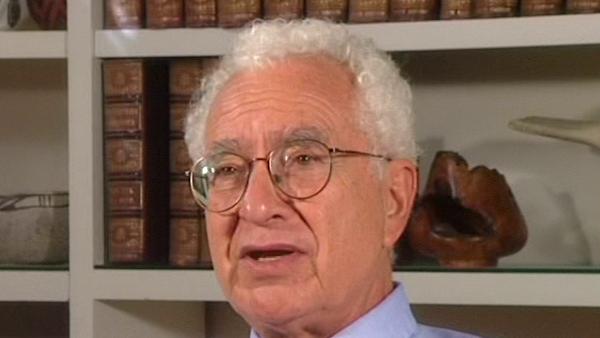NEXT STORY

The job situation
RELATED STORIES

NEXT STORY

The job situation
RELATED STORIES


|
Views | Duration | |
|---|---|---|---|
| 101. Investigating regge poles at MIT | 660 | 04:27 | |
| 102. Quarks, mass shell analysis and the bootstrap | 670 | 01:31 | |
| 103. Giving a course on general ideas about elementary particles | 754 | 01:16 | |
| 104. Parastatistics. Lunch with Bob Serber | 809 | 02:26 | |
| 105. The job situation | 962 | 02:57 | |
| 106. Criticism of Julian Schwinger | 4766 | 01:57 | |
| 107. Woods Hole; working on classified problems | 810 | 01:54 | |
| 108. Anti-ballistic missiles and strategy | 823 | 01:39 | |
| 109. Julian Schwinger | 2942 | 02:22 | |
| 110. The summer of 1963 | 844 | 01:29 |


People were already starting to talk that spring about parastatistics, and I didn't see much use for parastatistics, so I didn't pay too much attention to it. It seemed to me like an unnecessary frill in quantum field theory, but anyway I had heard about it. I’d heard a little bit about... I'd heard people talking about it a little bit. Then some time in March I guess it was-approximately in 1963, in March or April–I went down to Columbia to give a talk and Bob Serber asked me over lunch, I believe it was, why I didn't use the formula three times three times three equals one plus eight plus eight plus ten, and postulate some sort of an object, actual object, which would represent the triplet. And I said, ‘Well, of course, I've thought of that and worked on it, but I don't like it too much because the charges come out fractional.’ And on a napkin I wrote out the formulae and showed him the arithmetical formulae and showed him that the charges came out plus two thirds, minus a third and minus a third if you did that. And he said ‘Oh’—he hadn't realized that. I mentioned this conversation sort of as a joke during the colloquium or lecture, whatever it was that I gave that afternoon, but while I was doing it, while I was lecturing and while I was thinking about it that day, it occurred to me that maybe these particles never came out, maybe they were not detectable. They were stuck somehow inside. In that case there would be no contradiction with observation, but of course they might have escaped observation anyway if they're very heavy. But besides that there would be no contradiction with the principle of hadronic egalitarianism, which I liked so much. All you'd have to do is to say that observable hadrons are all equally non-elementary, or… and I liked that very much, and so I began to… to look into the matter, see if it was serious, see if it was possibly serious.
New York-born physicist Murray Gell-Mann (1929-2019) was known for his creation of the eightfold way, an ordering system for subatomic particles, comparable to the periodic table. His discovery of the omega-minus particle filled a gap in the system, brought the theory wide acceptance and led to Gell-Mann's winning the Nobel Prize in Physics in 1969.
Title: Parastatistics. Lunch with Bob Serber
Listeners: Geoffrey West
Geoffrey West is a Staff Member, Fellow, and Program Manager for High Energy Physics at Los Alamos National Laboratory. He is also a member of The Santa Fe Institute. He is a native of England and was educated at Cambridge University (B.A. 1961). He received his Ph.D. from Stanford University in 1966 followed by post-doctoral appointments at Cornell and Harvard Universities. He returned to Stanford as a faculty member in 1970. He left to build and lead the Theoretical High Energy Physics Group at Los Alamos. He has numerous scientific publications including the editing of three books. His primary interest has been in fundamental questions in Physics, especially those concerning the elementary particles and their interactions. His long-term fascination in general scaling phenomena grew out of his work on scaling in quantum chromodynamics and the unification of all forces of nature. In 1996 this evolved into the highly productive collaboration with James Brown and Brian Enquist on the origin of allometric scaling laws in biology and the development of realistic quantitative models that analyse the influence of size on the structural and functional design of organisms.
Tags: Columbia University, Bob Serber
Duration: 2 minutes, 27 seconds
Date story recorded: October 1997
Date story went live: 24 January 2008